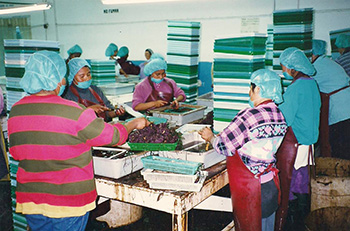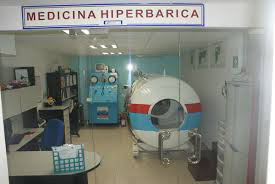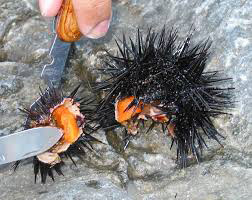 |  |

The rusty old engine sputtered to a halt. Ohmygod! Surely Luis was in trouble. He was on the ocean floor at a depth of 25 meters (75 feet) and that temperamental engine had been pumping his lungs with air.
His 17-year-old son Daniel hastened to restart it. Pull and sputter. Nothing! The boy appeared calm, going about his business with incredible maturity, knowing his father trusted him with his life. He kept trying.
Pedrin, the skipper of the little panga, jumped into action and abruptly gave the air line a couple of quick strong jerks. The small motor had obviously stalled before. The jerks meant “you had better start your steady slow ascent to the surface because shortly you’ll be out of air.”
About a minute later Luis surfaced. The little precious air remaining in the hose gave him the time he needed.
In a way I was surprised it didn’t happen on earlier dives. The decrepit old Briggs & Stratton 8 hp motor was held together by a twisted wire hanger and duct tape. It leaked gas and belched noxious smoke all day. It was bolted to a 2x12 and roped around a seat of the 18-foot panga. The air tank occupied the small bow seat. Luis was down deep, gathering “erizos” or sea urchins, which would end up in Tokyo sushi bars. The mature urchins are about the size of a baseball, covered with spines.
It was 1996, and we were off the coast of Baja about a mile offshore just south of the landmark Halfway House. On shore I noted more and more modern developments built for the growing legions of Americans in Baja.
The diving for sea urchins is not a world for fussy gringos however. It is a business that only few brave men experience. It is extremely dangerous, requires skill and daring, and pays very little. Work days are limited by weather and storms; there are no paid holidays, nor even medical, much less hazard insurance.
 I Planned To Go Fishing
I Planned To Go Fishing
I actually stumbled onto this expedition. After waiting on the bluff at El Campito for almost an hour watching the little cliffside village come to life, I realized Jorge, who was supposed to take me out fishing at 7 a.m. was a no-show. (Ran out of gas he said later).
Amidst the fishing shacks and a few family restaurants I watched the waves crash onto the rocks. Today the popular Splash Restaurant has made the village a gringo destination.
It was a gray September morning and the ocean was much more unsettled than the day before. We were due to receive big surf whipped up from a hurricane that had earlier struck Baja’s tip. The ocean would dance to the beat of the faraway storm, rising and falling like the lungs of a sleeping dog.
From a nearby shack a short, light-haired man emerged and smiled broadly at me. About 35-40 years old, he asked “¿Quien espera?” wondering who I was waiting for. He said if Jorge didn’t show he’d take me out and I could fish while he gathered “erizos.”
A vintage white van soon arrived and backed down the treacherous slope. The man and two others unloaded gear onto one of the weather-beaten pangas that had been roped to the base of the cliff.
They were divers. While one man, Pedrin, also about 35 years old, hooked up the Mariner 70 hp outboard motor, the man I’d talked to, Luis, began fiddling with the small Briggs & Stratton. The van driver handed Daniel, the youngest man, nets, air hoses, wetsuits and other paraphernalia and left.
Luis looked to me and pointed to the small wooded shelf next to the outboard, motioning me aboard. I knew fishing would literally take a back seat to their diving, but this loomed as an adventure I couldn’t pass up.
 Into The Crashing Surf
Into The Crashing Surf
There’s a sandy break in the rocks just wide enough for one of these small pangas to get through. The break however does not go straight out. It makes a sharp left turn, then a right. We four, Luis, Daniel, Pedrin and I pushed and shoved the panga each time water from a wave swirled around it. It finally broke free from the sand and floated. We jumped in wet from the waist down.
Pedrin adroitly maneuvered the small craft between rocks and pulsing tide, dashing out to a comfort zone beyond the breakers. Smiles all around. Just the commute to get to work is dangerous. The commute home was even worse, riding the larger waves in between the rocks.
We headed south, keeping the panga in troughs. We glided to a stop just over a huge kelp bed. Luis and Daniel began tearing and collecting seaweed, choosing the newest, softest, cleanest ends. As Pedrin aimed us toward the nearby “erizo” zone, Luis filled a net with the gathered seaweed. He then began stomping on it making it a gooey mess he called shampoo.
He coated his body with the goo, and easily slid into a thin wetsuit. He zipped it up and also coated it. This facilitated his pulling a thicker suit over the top of it. Pretty ingenious, I thought.
The black wet suit had seen better days. There were scratches all over it and a couple of rips had been patched with pieces of inner tube rubber.
Luis put “shampoo” all over his head and slipped on a thick black rubber hood. He pulled worn old gloves, with holes visible on most of the fingertips over his gnarled hands, knobby from the venom of so many sea urchin spines.
He put the air hose up under his crotch and over his shoulder and secured it with a weight belt. A mouthpiece was at the end of the hose. He attached a long three-pronged spear, grabbing distance away. He secured a sharp knife around his wrist with a strip of rubber. Then he grabbed a makeshift tool that would pry the erizos loose. It was about 18 inches long with two bent prongs at the end.
 He Slid Over The Side.
He Slid Over The Side.
I tried fishing when he was down, but my heart was not in it, being mesmerized by the diving activity. All day I only caught one decent rock cod and a larger male sheepshead.
He Came Up GaspingLuis spent about a half hour on each dive. After the first time, he came up gasping, spitting and complaining. Apparently oil had gotten into his airline; it had tasted bad and was giving him a headache. He even handed me the mouthpiece to try it. It was awful. How he could breathe that foul air was beyond me. But rather than aborting, he made four more dives – including the one when the motor conked
His diving, however, was successful. And after five dives he had emptied about four kilos of succulent urchins from his net into a bucket. He also speared four fish.
Ninety percent of the west coast’s harvest is exported to Japan where it is called “uni.” To fill the demand, the sea urchin industry has grown in Mexico as well as California. The previous year in California alone over 30 million pounds were pulled off the ocean floor.
Luis was harvesting only the finest, with a bright yellow-orange meat. We broke one open. Pedrin loved the stuff and was slurping them raw from the shell. At their goading I tried some. They laughed and implied that it did good things for a man’s virility.
When Luis was down below, the other two were busy. Pedrin had to stand the whole while keeping the boat steady with his oars, and keeping Luis’ line free. It constantly got snagged in kelp and he used an oar to bring it in, where Daniel could whack it away with a machete. Daniel fed out the line to his dad and was responsible for keeping the untrustworthy air motor running.
Pedrin is also a diver and he and Luis have dived all over the Pacific Coast, from the vast sea urchin beds around El Rosario, about 200 miles south, to California.
While neither complained about shark or other animal attacks, both agree that ascending too rapidly is the greatest hazard. There are only two decompression tanks in the entire area, one in the aforementioned El Rosario and the other in San Diego, about 60 miles north.
30 Hours In Decompression
Pedrin once narrowly escaped with his life in El Rosario, and spent 30 hours in the decompression chamber. Luis escaped once with air pockets blotching his skin, and had many close calls where his lung power helped him survive.
Luis’ buyer, who eventually gets the sea urchins to Japan, pays him $18.00 U.S. per kilo. His four kilos for about five hours of hard work for the three of them netted $72.00. Probably another $5.00 for selling his fish, and then what I gave him. About $100 total for the three men for the day.
For this he was sucking bad air that gave him a headache. In a flimsy suit he exposed himself to about 50 pounds per square inch (psi) air pressure, or well over treble that of sea level. Add the near disaster and high waves that made it difficult to get back to shore. “But I need to work,” he laughed. “I’ve got seven kids.”
In typical Mexican fashion he bragged about his brood. Daniel here, one kid married, and one just finished high school. He was real happy about his kids getting an education. Maybe they would not have to risk their lives daily on the ocean floor.

Conservationists are divided as to the future ramifications of urchin harvests. Most agree there should be some regulations. Northern California already recognizes a problem. The warmer waters of Southern California and Baja California have more kelp beds and the urchin colonies should be better able to withstand harvesting.
Some contend that fewer kelp-munching urchins could mean new and bigger kelp beds, which encourage greater numbers of other species, including abalone. The conservation question is one far removed from divers like Luis and Pedrin. The urchins are there. They work hard to get them. They get paid.
From the panga we could see cars on the coast road on their way to Ensenada. Little did the cars’ occupants realize the dramas played out daily by these hardy men offshore. They couldn’t expect to know. Nor could Japanese patrons in sushi bars half a world away.

Easy to buy! I didn’t have to use it, so no clue on that front

Team were on point, provided inside information, prices were great and they had my proposal already...

No incidents on this trip, thank Goodness. I buy Baja Bound for short Mexico trips from San Diego....